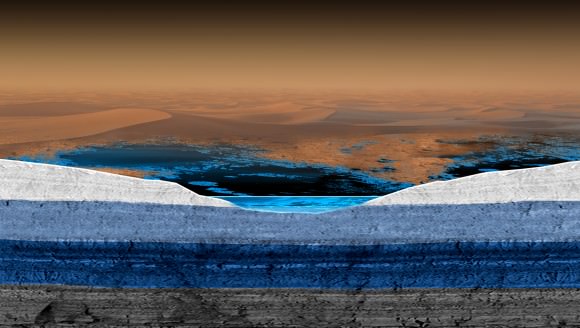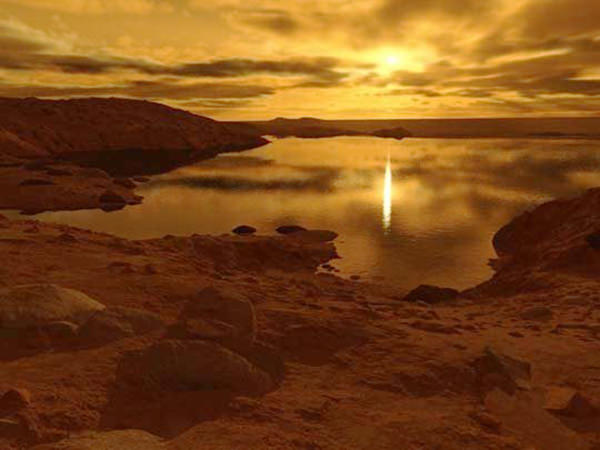Titan — that moon of Saturn that has what some scientists consider precursors to elements for life — is a neat place to study because it also has a liquid cycle. But how the hydrocarbons move from the moon’s hundreds of lakes and seas into the atmosphere and the crust is still being examined.
A new study suggests that rainfall on Titan changes when it interacts with underground icy clathrates, which are watery structures that can include methane or ethane. This can make it easier for reservoirs to be created.
“We knew that a significant fraction of the lakes on Titan’s surface might possibly be connected with hidden bodies of liquid beneath Titan’s crust, but we just didn’t know how they would interact,” stated lead author Olivier Mousis, a Cassini research associate at the University of Franche-Comté in France. “Now, we have a better idea of what these hidden lakes or oceans could be like.”

This information is based on models of how the reservoirs would move through the crust of the icy moon. Clathrates would form at the bottom of reservoirs (which are filled with methane) and gradually split its molecules into solid and liquid components. Over time, this would transform the methane into propane or ethane.
“Importantly, the chemical transformations taking place underground would affect Titan’s surface,” the Jet Propulsion Laboratory stated.
“Lakes and rivers fed by springs from propane or ethane subsurface reservoirs would show the same kind of composition, whereas those fed by rainfall would be different and contain a significant fraction of methane. This means researchers could examine the composition of Titan’s surface lakes to learn something about what is happening deep underground.”
More about the research is available in the print version of the Sept. 1 edition of Icarus. Of note, the Cassini spacecraft is going to do another flyby of Titan in 17 days — its 105th, according to the spacecraft website.
Source: Jet Propulsion Laboratory


“Alkanofer \aI-KAN-o-fer\ A subsurface body made of liquid alkanes, molecules such as methane and ethane that contain only single-bonded carbon and hydrogen atoms. Alkanofers are analogous to water-bearing aquifers on Earth…”
from http://www.highbeam.com/doc/1G1-288428347.html (first google result)